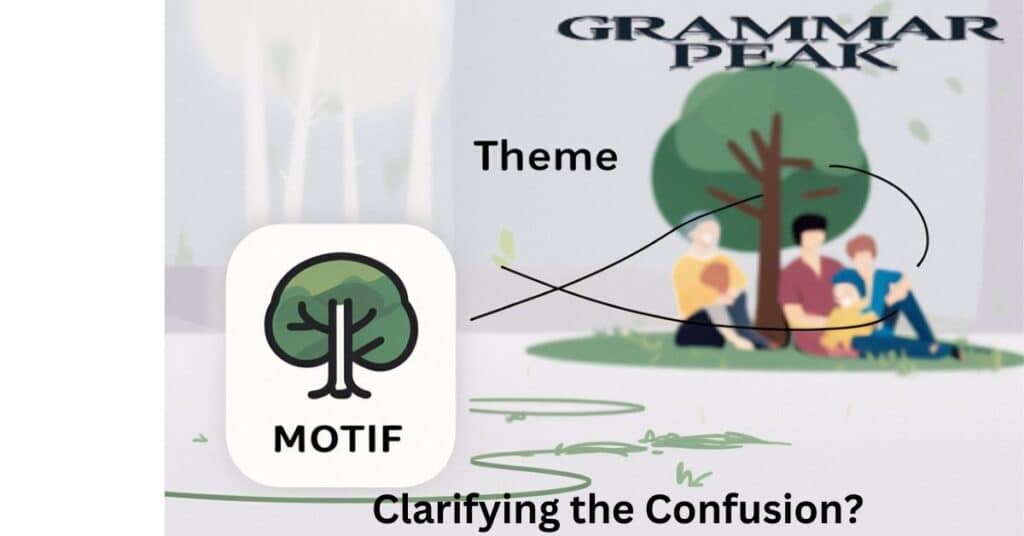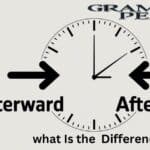Understanding the difference between motif and theme is crucial for anyone interested in literature and storytelling. These two concepts often confuse readers and writers alike. While they are related, they serve different purposes in a narrative.
A motif is a recurring element that adds depth, while a theme is a story’s central idea or message. This article will clarify the confusion surrounding motif vs theme and explore their significance in literature.
What is a Motif?
A motif is a recurring element in a narrative that has symbolic significance. It can be an image, sound, action, or idea that appears throughout a story. Motifs help to reinforce the theme and enhance the reader’s understanding of the text.
For example, in Shakespeare’s “Macbeth,” the blood motif symbolizes guilt and ambition. Each time blood appears, it deepens the reader’s grasp of the characters’ struggles. Motifs can also be found in various forms, such as symbolic motifs, character motifs, and narrative motifs. Each type serves a unique purpose in storytelling. By repeating certain elements, authors create a sense of unity and coherence in their work.
Types of Motifs
There are several types of motifs that authors use to enrich their narratives. Visual motifs often involve recurring images that evoke specific emotions or ideas.
- Abstract Motifs: These motifs represent broad concepts or ideas that resonate throughout the narrative. For instance, the recurring motif of freedom may appear in various forms, such as characters striving for liberation or breaking free from constraints.
- Nature Motifs: These motifs use elements of nature to reflect characters’ emotions or themes. For example, a storm might symbolize turmoil and conflict, while a calm sea might represent peace and resolution.
- Temporal Motifs: These motifs involve time-related elements, such as seasons or specific periods, to convey themes of change or the passage of time. For instance, the change of seasons can symbolize the cycle of life and growth.
- Motifs of Duality: These motifs explore contrasting ideas or characters, highlighting good vs. evil or light vs. dark themes. An example could be the recurring presence of a character who embodies both kindness and cruelty, illuminating the complexities of human nature.
- Religious or Spiritual Motifs: These motifs draw on elements of faith, belief, or spirituality to explore deeper themes. For example, the cross in literature often symbolizes sacrifice, redemption, or the struggle between sin and salvation.
- Societal Motifs: These motifs reflect social issues or cultural norms within a story. For instance, recurring references to class struggle or gender roles can highlight themes of injustice and inequality, prompting readers to consider the societal context of the narrative.
- Journey Motifs: These motifs focus on physical or metaphorical journeys taken by characters. A common example is the hero’s journey, where a character undergoes trials and transformations, symbolizing personal growth and self-discovery.
- Memory Motifs: These motifs explore the role of memory in shaping identity and experience. For example, recurring flashbacks or references to the past can illustrate how memories influence a character’s actions and decisions, emphasizing themes of regret, nostalgia, or trauma
Explore these Motif vs Theme: Clarifying the Confusion
What is a Theme?
A theme is the central idea or message that a story conveys. It reflects the author’s perspective on a particular subject and often explores abstract concepts such as love, justice, or the human experience. Themes can be explicit, clearly stated in the text, or implicit, requiring readers to infer the message through the narrative.
For example, the theme of good vs evil is prevalent in many stories, such as “Harry Potter.” The battle between Harry and Voldemort represents the struggle between light and darkness. Understanding the theme helps readers grasp the fundamental ideas in storytelling and connect with the characters on a deeper level.
Types of Themes
Themes can be categorized into various types, each offering unique insights into the human experience.
- Love and Relationships: Themes exploring the complexities of love, friendship, family dynamics, and romantic relationships.
- Good vs Evil: Themes that delve into the struggle between moral righteousness and malevolence, often highlighting the choices characters make in their quest for justice.
- Identity and Self-Discovery: Themes that focus on the journey of understanding oneself, including the exploration of personal beliefs, values, and the search for one’s true self.
- Coming of Age: Themes that depict the transition from youth to adulthood, addressing the challenges and experiences that shape a person’s growth and maturity.
- Justice and Injustice: Themes that examine the concepts of fairness, morality, and the consequences of societal structures, often highlighting struggles against oppression and inequality.
- Survival and Resilience: Themes that portray the human spirit’s ability to endure hardships and overcome adversity, emphasizing strength in the face of challenges.
- Isolation and Alienation: Themes that explore feelings of loneliness and disconnection from society, often reflecting on the impact of social dynamics and personal experiences.
- Nature and Humanity: Themes that investigate the relationship between human beings and the natural world, often addressing environmental issues and the impact of human actions on nature.
- Power and Corruption: Themes that analyze the dynamics of power, authority, and the potential for corruption, exploring how power can influence morality and lead to ethical dilemmas.
- Freedom and Confinement: Themes that contrast the desires for liberty with the constraints imposed by society, circumstances, or personal choices, highlighting the struggle for autonomy.
- Tradition vs Change: Themes that explore the conflicts between maintaining traditional values and adapting to new ideas, often showcasing the challenges characters face in balancing the old with the new.
- Fear and Courage: Themes that focus on the emotions of fear and the acts of bravery that arise in response, illustrating how characters confront their fears and find strength in difficult situations.
Motif vs Theme: The Differences
Understanding the motif vs theme differences is essential for literary analysis. While both motifs and themes contribute to a narrative, they serve distinct purposes.
A motif is a recurring element, symbol, or idea that appears throughout a literary work. Consequently, it contributes to the overall meaning and emotional resonance of the story. Motifs can manifest as images, phrases, or situations that reinforce the central themes by providing a consistent thread that ties different narrative parts together.
For example, the use of specific colors or objects can evoke particular emotions and highlight significant moments. As a result, readers can draw connections and gain deeper insights into the characters’ experiences.
Theme
In contrast, a theme is the underlying message or central idea that a work of literature conveys. Moreover, themes explore universal concepts such as love, conflict, or morality, thereby inviting readers to reflect on their own lives and the human condition.
Unlike motifs, which serve as repeating elements, themes encompass broader philosophical questions and insights that the narrative ultimately seeks to address. Themes encourage discussion and interpretation, providing a framework through which readers can analyze the characters’ journeys and the implications of their choices within the story.
Key Differentiators
Several key differentiators help clarify the distinction between motifs and themes.
- Specificity vs Universality: Motifs are specific and concrete elements that recur throughout the narrative, contributing to its texture and symbolism. Themes, in contrast, are abstract and universal concepts. As a result, they transcend the specifics of the plot and offer broader insights into the story’s meaning.
- Narrative Function: Motifs serve to enhance the narrative by reinforcing key ideas and emotions, often acting as visual or auditory reminders of the themes at play. Themes function as the overarching messages or lessons of the story, providing a lens through which readers can interpret the characters’ actions and the plot’s progression.
- Reader Engagement: Motifs engage readers by creating familiarity and anticipation as they recognize patterns and symbols throughout the text. Themes invite deeper reflection and discussion, encouraging readers to connect personal experiences and societal issues to the larger concepts presented in the narrative.
- Development Over Time: Motifs can evolve in meaning as the story progresses, often taking on new significance with different contexts or character developments. Themes, however, remain relatively stable throughout the narrative. In fact, they consistently represent the core ideas and messages that the author seeks to communicate.
- Artistic Expression: Motifs often reflect the author’s artistic choices. For example, they showcase their unique style through repeated imagery, phrases, or symbols, which ultimately contribute to the overall aesthetic of the work. Themes represent the intellectual exploration of ideas and values, highlighting the author’s philosophical stance and commentary on life, society, and human nature.
Here’s a table comparing motifs and themes with related aspects:
| Aspect | Motif | Theme |
| Definition | A recurring element or symbol | The overarching idea or central message |
| Purpose | To reinforce key ideas and emotions | To encapsulate the moral or lesson of the narrative |
| Nature | Tangible and specific | Intangible and abstract |
| Examples | Recurring colors, settings, or sounds | Freedom, sacrifice, the human condition |
| Role | Provides texture and depth to the narrative | Shapes the plot and character arcs |
| Impact on Reader | Creates familiarity and emotional connection | Encourages deeper analysis and contemplation |
Read Must be Motif vs Theme: Clarifying the Confusion
Origins of Motif and Theme
The origins of motifs and themes can be traced back to ancient storytelling traditions. Early narratives often relied on recurring elements to convey messages and engage audiences.
Origins of Motif
The term “motif” originates from the French word “motif,” meaning “motive” or “reason.” In literature, motifs have been used since ancient times to create meaning and enhance storytelling. They serve as building blocks for themes, allowing authors to explore complex ideas through repetition.
Motifs can also be found in various art forms, such as music and visual arts. In these contexts, motifs help convey emotions and ideas, similar to their role in literature. Understanding the origins of motifs provides a deeper appreciation for their significance in storytelling.
Origins of Theme
The concept of theme has its roots in classical literature and philosophy. Ancient Greek playwrights often explored themes related to morality, fate, and the human condition. Over time, the study of themes has evolved, with literary critics analyzing how themes reflect societal values and beliefs.
In modern literature, themes often address contemporary issues, such as power and corruption or freedom and confinement. By examining the origins of themes, readers can better understand how literature reflects and shapes cultural narratives.
Examples of Motifs and Themes in Literature
To illustrate the concepts of motifs and themes, let’s explore some examples from well-known literary works.
Examples of Motifs
- Weather in “Wuthering Heights” by Emily Brontë: Throughout the novel, the motif of weather, particularly storms and winds, reflects the turbulent emotions and conflicts of the characters. Storms often coincide with intense moments of passion or turmoil, highlighting the emotional intensity of the story.
- Journey in “The Hobbit” by J.R.R. Tolkien: The motif of the journey serves as a central element in the narrative, symbolizing growth, adventure, and self-discovery. Bilbo Baggins’ travels from his comfortable home into the unknown illustrate the transformative power of adventure and the challenges that shape one’s character.
- Garden in “The Secret Garden” by Frances Hodgson Burnett: The motif of the secret garden symbolizes healing, growth, and rejuvenation. As the garden transforms from a neglected space into a vibrant sanctuary, it parallels the characters’ personal growth and emotional healing, representing hope and renewal.
- Light and Darkness in “Macbeth” by William Shakespeare: The recurring motif of light and darkness emphasizes moral ambiguity and the struggle between good and evil. Light is often associated with truth and righteousness, while darkness symbolizes deceit and ambition, reflecting the characters’ inner conflicts and the consequences of their actions.
- Music in “The Great Gatsby” by F. Scott Fitzgerald: The motif of music, particularly jazz, captures the essence of the Jazz Age and the characters’ emotional states. Music serves as a backdrop to key events, enhancing the atmosphere of celebration and despair, and illustrating the contrast between the glamour of the era and the underlying emptiness of the characters’ lives.
Examples of Themes
- Isolation in “The Stranger” by Albert Camus: The theme of isolation is central as Meursault, the protagonist, navigates through a society that condemns him for his detachment and lack of emotion, questioning the meaning of human existence and societal norms.
- Power and Ambition in “Macbeth” by William Shakespeare: This theme explores the destructive nature of ambition as Macbeth’s desire for power leads him down a path of moral corruption and tyranny. The play illustrates how unchecked ambition can result in chaos and the eventual downfall of not only the individual but also those around them.
- Power of Friendship in the “Harry Potter” series by J.K. Rowling: The theme emphasizes the importance of friendship and loyalty in overcoming adversity. The bonds formed between Harry, Hermione, and Ron illustrate how love and support can triumph over darkness, showcasing the strength found in unity and collaboration.
- Identity and Self-Discovery in “The Alchemist” by Paulo Coelho: This theme revolves around the journey of self-discovery and the pursuit of one’s legend. The protagonist, Santiago, learns that understanding one’s true self and following one’s dreams are fundamental to achieving fulfillment and purpose in life.
- Society and Class in “Pride and Prejudice” by Jane Austen: The theme examines the constraints of social class and the impact of societal expectations on personal relationships. Through the experiences of Elizabeth Bennet and Mr. Darcy, the novel critiques the rigid class structures of its time while advocating for individual merit and genuine connections over societal status.
FAQ” S
What is the main difference between a motif and a theme?
A motif is a recurring element in a story, while a theme is the central idea or message.
Can a motif exist without a theme?
Yes, a motif can exist independently, but it often supports a theme.
How do motifs enhance storytelling?
Motifs connect different parts of a narrative, deepening the reader’s understanding.
What are some common themes in literature?
Common themes include love, justice, power, and the struggle between good and evil.
How can I identify motifs and themes in a story?
Look for recurring elements and consider the overall message the author conveys through the narrative.
Conclusion
In summary, understanding motif vs theme is essential for anyone interested in literature and storytelling. While motifs serve as recurring elements that enhance the narrative, themes convey the central ideas and messages. By recognizing these differences, readers can engage more deeply with texts and appreciate the richness of literary analysis. Exploring motifs and themes allows us to connect with the human experience and gain insights into our own lives.

Mason Blake is an experienced blogger with a passion for language and communication. With years of expertise in crafting informative and engaging content, Mason shares valuable insights on grammar and writing. His clear, concise, and reader-friendly approach has earned him a loyal following, helping readers sharpen their language skills and master the art of effective communication.








Great article, exactly what I was looking for.